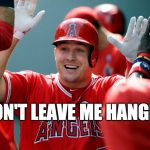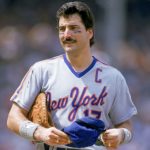’70s-Born MLB Players Nearing Extinction

by Rob Harris | March 1, 2018
In case you missed it — and many people reading this probably did — the 1970s were a wild time. The decade gave us Star Wars and Space Invaders, The Fonz and Farrah Fawcett, Van Halen and Disco Demolition Night. If you want a small taste of ’70s baseball, just watch the walk-off home run Chris Chambliss hit in the 1976 ALCS. The funny thing is, we just called it “the playoffs” back then. The ALCS and ALDS nomenclature was still years away.
The chaos that ensued at Yankee Stadium that night epitomized a game in transition. Players had just won the right to sell their services to the highest bidder (aka, free agency), and nothing would ever be the same. Nobody was counting pitches yet, and interleague play was a whim that bordered on sacrilege, but everything about baseball changed in the 1970s.
Four years ago, the memories of that decade inspired me to create That ’70s Project. At the start of the 2014 season, I realized that as time marched on, all big-league ballplayers born during the 1970s would eventually disappear from the game. It wasn’t going to happen right away, but I wanted to lay the groundwork for when it did.
I scanned the 40-man rosters for all 30 teams in MLB, and discovered that 76 players —roughly eight percent of all major leaguers at the time — were alive when the Pirates of Willie Stargell and Dave Parker reigned as World Series champs. While Disco wasn’t yet dead at the end of 1979, some of the game’s future stars were wearing diapers.
In the four years since I started the project, the game has taken a rapid turn away from the holdovers from the Me Decade. A review of MLB’s 40-man rosters indicates that while the ’70s doomsday isn’t yet upon us, it’s right around the corner.
As of late February, just seven players born in the 1970s remained on an MLB roster. In 2014, the New York Yankees had seven such players on their roster, and the Philadelphia Phillies had nine. But youth is king in the major leagues, and data suggests that once a player turns 30, his production starts to decline. With every passing year, the player pool is replenished with new talent, and the older guys eventually find themselves on the outside looking in.
The slow pace of free agent signings this offseason hit ’70s-born players hard. For instance, first-ballot Hall of Famer Ichiro Suzuki can’t find a team willing to give him space on its 2018 roster. Neither can Jayson Werth, John Lackey, R.A. Dickey or Koji Uehara. These players — each born in the 1970s — could possibly make meaningful contributions, but nobody is giving them a chance. The game, it seems, has passed them by.
Or consider the case of Bartolo Colon. Big Sexy — born May 24, 1973 — is sitting at 240 career wins, and he needs four more to pass Juan Marichal as the winningest pitcher from the Dominican Republic. He’s in camp with the Texas Rangers this spring, on a minor league contract that will pay him $1.75 million if he makes the team. But that’s hardly a sure thing, and he’s not being counted for the purposes of this article.
So who are these lucky seven? The most prominent ones are Victor Martinez of the Detroit Tigers (born 12/23/78) and Adrian Beltre of the Texas Rangers (4/7/79). Both players are in the final year of their contracts, as is Brad Ziegler of the Florida Marlins (10/10/79).
Next on the list — and the only player signed beyond 2018 — is Fernando Rodney of the Minnesota Twins. At 42 years of age, as of March 18, Rodney will begin the season as the Twins’ closer.
The remaining players are Peter Moylan of the Atlanta Braves (12/2/78), Joaquin Benoit of the Washington Nationals (7/26/77) and Chase Utley of the Los Angeles Dodgers (12/17/78). And for those who thought Albert Pujols would be on the list, you weren’t too far off: He was born January 16, 1980.
It’s quite possible that a player like Carlos Ruiz (1/22/79) could still find his way onto somebody’s roster as the 2018 season unfolds. But as it now stands, the end of MLB players born in the decade that gave us the Designated Hitter and the Big Red Machine is closer than ever before.
Let’s enjoy them while we still can.

























